NGV Vienna Art and Design - Klimt Schiele Hoffmann Loos
18 Jun 2011 - 09 Oct 2011
NGV International
180 St Kilda Road
Music
Vienna has long held a pre-eminent place in Europe's musical life, being home to the musical giants Joseph Haydn (1732–1809), Wolfgang Amadeus Mozart (1756–1791), Ludwig van Beethoven (1770–1827), Franz Schubert (1797–1828), Johannes Brahms (1833–1897), Gustav Mahler (1860–1911) and Arnold Schoenberg (1874–1951).
Haydn, Mozart and Beethoven, occasionally designated as the First Viennese School, belong to the Classical period in Western music, which extends from the early to mid eighteenth century into the early nineteenth.
Yet the term 'First Viennese School' is misleading – strictly speaking there wasn't one. While Mozart and Haydn knew and admired one another (and there was much cross-pollination of musical ideas and invention) and Beethoven took lessons in composition with Haydn for a shorttime, they were all independent of one another.
While Beethoven straddles the Classical and Romantic periods, Brahms and Schubert, the 'inventor' of the Romantic Lied, are central to the Romanticism of the nineteenth century. Mahler stands as one of the great late Romantic composers while pointing the way to modernism in the twentieth century.
Schubert was the only one of these composers born in Vienna. Brahms, born in Hamburg, settled permanently in Vienna in 1868. He was appointed artistic director of the famed Gesellschaft der Musikfreunde (Society of Music Lovers) from 1872 to 1875, introducing the Viennese to some of the great baroque music of Bach and Handel.
From mid century, Vienna was in the grip of the Viennese waltz which found its greatest expression through Johann Strauss II, the 'waltz king'. His operettas were also extremely popular along with those of Lehar and Offenbach.
The Second Viennese School evolved around Arnold Schoenberg (1874–1951) and his two most well-known students Alban Berg and Anton Webern.
Initially the music of Schoenberg – and to some extent his pupils – used late-Romantic tonalities and chromatic expression (indeed Mahler championed Schoenberg's music during his lifetime).
The evolution of dissonance and atonality into the twelve tone system of composition was not evident until the early 1920s, but it is the uncompromising individuality of these composers and their formal rigour that distinguishes this Second Viennese School.
Explore the music of Vienna
Lorraine Milne, a composer and music educator, and Elizabeth Cross, Senior Researcher in International Art at the National Gallery of Victoria, discuss aspects of Gustav Mahler's life and work as a composer and as the Director of The Court Opera in Vienna early in the Twentieth Century.
Video playlist
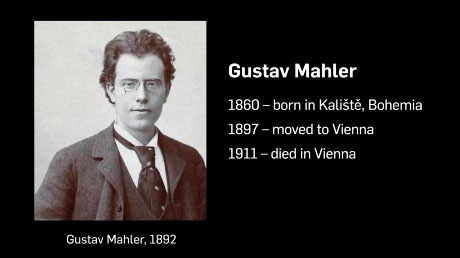
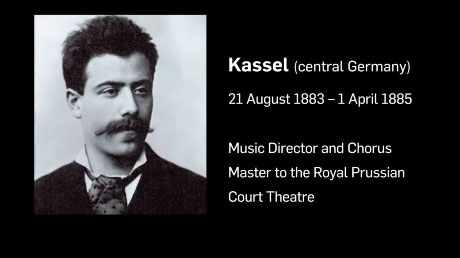
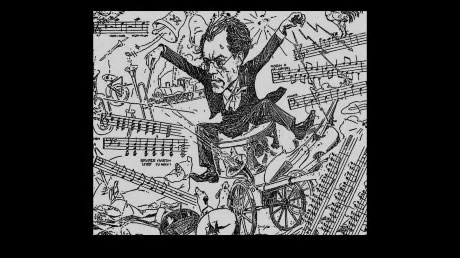
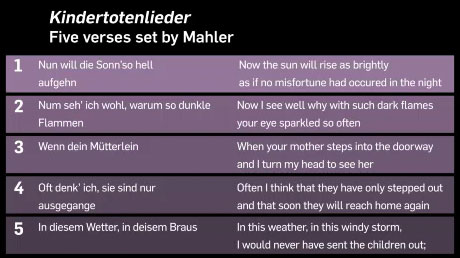
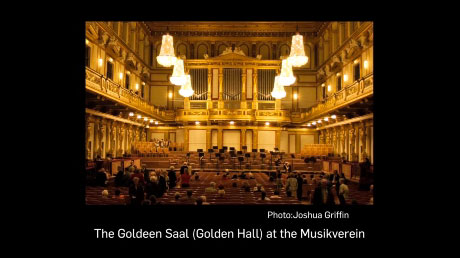
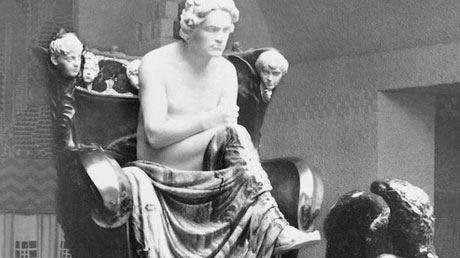
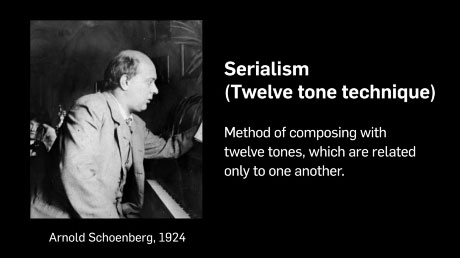
- To download full credits (RTF) click here.
- To purchase this and other Sydney Symphony Mahler recordings conducted by Vladimir Ashkenazy, click here.
- Mahler's 9th symphony with special thanks to Philharmonia Orchestra, London. Click here for more.
- Kindertotenlieder (Rückert): V: In diesem Wetter, in diesem Braus by Gustav Mahler. Performed by Dame Janet Baker and Hallé Orchestra. Conducted by Sir John Barbirolli. Licensed by EMI Music, Australia.
- Ode to Joy from Symphony No. 9 in D minor, Op.125. Music by Ludwig van Beethoven. Words by Friedrich Schiller. Performed by Sydney Philharmonia Choirs and Orchestra. Conducted by Antony Walker. Licensed by Australian Broadcasting Corporation, Australia.
- Lieder eines fahrenden Gesellen (Songs of a Wayfarer) by Gustav Mahler. Performed by Sydney Symphony Orchestra. Conducted by Vladimir Ashkenazy. Licensed by Sydney Symphony Orchestra, Australia.
- Symphony No. 1 in D major 'Titan' by Gustav Mahler. Performed by Sydney Symphony Orchestra. Conducted by Vladimir Ashkenazy. Licensed by Sydney Symphony Orchestra, Australia.
- Symphony No. 9 by Gustav Mahler. Performed by Philharmonia Orchestra, London. Conducted by Esa-Pekka Salonen. Licensed by Philharmonia Orchestra, London.
- Kennedy, Michael. The Master Musicians - Mahler J M Dent and Sons Ltd, 1974
- Mahler, Alma. Mitchell, Donald and Martner, Knud, eds. Gustav Mahler: Memories and Letters. Cardinal, 1990
- Lebrecht, Norman. Why Mahler? How One Man and Ten Symphonies Changed the World. Faber and Faber, 2010
- Ross, Alex. The Rest is Noise. Listening to the Twentieth Century. Picador 2007
- La Grange, Henry-Louise de, Gunther Weiss, Knud Martner, eds. Gustav Mahler Letters to His Wife. Faber and Faber, 2004
- La Grange, Henry-Louise de, Mahler-Symphonies-Notes: Henry-Louis de La Grange - Symphony No. 9.
Exhibition highlights
Austria 1890–1918
Self-portrait with hands on chest 1910
charcoal, watercolour and gouache
44.8 x 31.2 cm
Kunsthaus Zug, Stiftung Sammlung Kamm
Austria-Hungary 1890–1918
Portrait of the painter Hans Massmann 1909
oil and metallic paint on canvas
120.0 x 110.0 cm
Kunsthaus Zug
Stiftung Sammlung Kamm
Austria-Hungary 1868-1918
WIENER WERKSTÄTTE, Vienna (manufacturer)
Austria-Hungary 1903-32
Flower basket (Model no. S 781) 1906
silver
21.3 x 7.2 x 4.3 cm
Asenbaum Collection
Austria-Hungary 1870–1956
WÜRBEL & CZOKALLY (CARL WÜRBEL), Vienna (manufacturer)
Austria-Hungary 1892–1913
VINZENZ MAYER’S SÖHNE, Vienna (retailer)
Austria-Hungary 1810–1922
Sports trophy 1902
silver, gilt, malachite
26.0 x 7.1 cm diameter
Private collection
© Josef Hoffmann Estate
Belgium 1866-1941
Kneeling youth 1898
plaster
79.5 x 19.4 x 44.3 cm
National Gallery of Victoria, Melbourne
Purchased, NGV Women’s Association to commemorate their 50th Anniversary and the 150th Anniversary of the NGV and with the assistance of the proceeds of the National Gallery of Victoria Annual Dinners, 2011 (2011.10)
Licensed by VISCOPY, Australia
Self-portrait with peacock waistcoat, standing 1911
gouache, watercolour and crayon
51.5 x 34.5 cm
Private collection
Austria-Hungary/Czechoslovakia/England 1886-1980
Conte Verona (1910)
oil on canvas
70.6 x 58.7 cm
Private collection, New York
Approved: Licensed by VISCOPY, Australia
Austria 1841–1918
Alexander ALBERT (manufacturer)
Austria active c.1904
Chair for Dr Karl Lueger 1904
Rosewood (Dalbergia sp.), mother-of-pearl, leather
98.5 x 63 x 59.5 cm
Wien Museum, Vienna
Estate of Karl Lueger, 1910
Enver Hirsch
Gustav Mahler conducts his Symphony No. 1 in D major
Cartoon from Wiener Illustrated Front Page of 25 November 1900
Photo: Imagno
IMAGNO/Austrian Archives
Austria 1868–1918
Self-portrait c.1916–17
oil painting on canvas on cardboard
74.0 x 50.0 cm
Belvedere, Vienna
The painter Carl Moll 1861-1945 1913
oil on canvas
128.0 x 95.5 cm
Belvedere, Vienna
Approved: Licensed by VISCOPY, Australia
Austria 1868-1918
Plate from Flächen Schmuck series, published in Die Quelle 1901
26 x 30
National Gallery of Australia Research Library
Austria 1890–1918
Self-portrait with hands on chest 1910
charcoal, watercolour and gouache
44.8 x 31.2 cm
Kunsthaus Zug, Stiftung Sammlung Kamm
Austria 1862–1918
Fritza Riedler 1906
oil on canvas
152.0 x 134.0 cm
Belvedere, Vienna
Austria-Hungary 1890–1918
Portrait of the painter Hans Massmann 1909
oil and metallic paint on canvas
120.0 x 110.0 cm
Kunsthaus Zug
Stiftung Sammlung Kamm
Austria-Hungary 1868-1918
WIENER WERKSTÄTTE, Vienna (manufacturer)
Austria-Hungary 1903-32
Flower basket (Model no. S 781) 1906
silver
21.3 x 7.2 x 4.3 cm
Asenbaum Collection
Austria-Hungary 1870–1956
WÜRBEL & CZOKALLY (CARL WÜRBEL), Vienna (manufacturer)
Austria-Hungary 1892–1913
VINZENZ MAYER’S SÖHNE, Vienna (retailer)
Austria-Hungary 1810–1922
Sports trophy 1902
silver, gilt, malachite
26.0 x 7.1 cm diameter
Private collection
© Josef Hoffmann Estate
Belgium 1866-1941
Kneeling youth 1898
plaster
79.5 x 19.4 x 44.3 cm
National Gallery of Victoria, Melbourne
Purchased, NGV Women’s Association to commemorate their 50th Anniversary and the 150th Anniversary of the NGV and with the assistance of the proceeds of the National Gallery of Victoria Annual Dinners, 2011 (2011.10)
Licensed by VISCOPY, Australia
Self-portrait with peacock waistcoat, standing 1911
gouache, watercolour and crayon
51.5 x 34.5 cm
Private collection
Austria-Hungary/Czechoslovakia/England 1886-1980
Conte Verona (1910)
oil on canvas
70.6 x 58.7 cm
Private collection, New York
Approved: Licensed by VISCOPY, Australia
Austria 1841–1918
Alexander ALBERT (manufacturer)
Austria active c.1904
Chair for Dr Karl Lueger 1904
Rosewood (Dalbergia sp.), mother-of-pearl, leather
98.5 x 63 x 59.5 cm
Wien Museum, Vienna
Estate of Karl Lueger, 1910
Enver Hirsch
Gustav Mahler conducts his Symphony No. 1 in D major
Cartoon from Wiener Illustrated Front Page of 25 November 1900
Photo: Imagno
IMAGNO/Austrian Archives
Austria 1862–1918
Johanna Staude 1917–18
oil on canvas
70.0 x 50.0 cm
Belvedere, Vienna
Austria 1868–1918
Self-portrait c.1916–17
oil painting on canvas on cardboard
74.0 x 50.0 cm
Belvedere, Vienna
The painter Carl Moll 1861-1945 1913
oil on canvas
128.0 x 95.5 cm
Belvedere, Vienna
Approved: Licensed by VISCOPY, Australia
Austria 1868-1918
Plate from Flächen Schmuck series, published in Die Quelle 1901
26 x 30
National Gallery of Australia Research Library
Austria 1868-1918
Plate from Flächen Schmuck series, published in Die Quelle 1901
26 x 30
National Gallery of Australia Research Library
Austria 1887–1923
WIENER WERKSTÄTTE, Vienna (manufacturer)
Austria 1903–1932
Jewel box (S 4880) 1920
silver-gilt
38.4 x 19.7 x 12.7 cm
The Metropolitan Museum of Art, New York
Purchase, Anonymous gift, 1978
© The Metropolitan Museum of Art/Art Resource, New York
Timeline
-
-
1857 Architecture Work on the Ringstrasse begins
Franz Joseph I orders demolition of city walls for the creation of a grandiose 'ring road'.
-
1864 Architecture Founding of the Austrian Museum of Art and Industry. The first Applied Arts museum on the continent modeled after the Victoria & Albert Museum in London.
Joseph Gayetty's medicated paper for the water-closet is advertised to American consumers as 'the greatest necessity of the age!'
-
1894 Architecture Otto Wagner appointed professor of architecture at Academy of Fine Arts
Famously, the Akademie der bildenden Künste (Academy of Fine Arts) twice rejected applications from an aspiring painter named Hitler.
-
1899 Architecture Architect Otto Wagner joins Secession
Two years after the union of Austrian artists was founded, architect Otto Wagner joined.
-
1857 Architecture Work on the Ringstrasse begins
-
-
1890 The Arts Egon Schiele born
The son of a syphilitic station master, Schiele was born in Tulln an der Donau in Austria.
-
1898 The Arts First issue of Ver Sacrum (Sacred Spring) published
The year of the first Secession exhibition also saw the publication of Ver Sacrum, an influential journal produced by Secession members.
-
1904 The Arts Oskar Kokoschka studies under Czeschka
The 18 year-old Expressionist artist and poet studied for a time under Carl Otto Czeschka.
-
1899 The Arts Moser and Hoffmann appointed as professors
Moser and Hoffmann appointed as professors at the School of Applied arts.
-
1900 The Arts Gustav Klimt reveals his University paintings
Commissioned to paint a trio of works for the University of Vienna's Great Hall, Klimt's art was roundly criticised for its sexual imagery.
-
1902 The Arts Czeschka starts teaching at the School of Arts & Crafts
Carl Otto Czeschka was an illustrator, graphic artist, designer and member of Wiener Werkstätte.
-
1904 The Arts Wiener Werkstätte manifesto published
The Werkstätte, a progressive alliance of artists and designers formed in 1903, declared that artisans and fine artists were equals.
-
1905 The Arts Klimt Gruppe quits the Secession
The Klimt Gruppe, also called the Stilisten (Stylists), were a design-oriented faction within the Secession.
-
1906 The Arts Schiele transfers to the Academy of Fine Arts
Barely 16, Egon Schiele was sent from the Kunstgewerbeschule to the more formal Akademie der bildenden Künste at the urging of teachers.
-
1907 The Arts Schiele and Klimt meet
The teenage Schiele met Gustav Klimt who mentored the young artist.
-
1908 The Arts Richard Gerstl commits suicide
After an ill-fated affair with the wife of composer Arnold Schoenberg, the Austrian painter took his own life on 4 November.
-
1910 The Arts Eduard Wimmer-Wisgrill sets up fashion section of Wiener Werkstätte
Fashion and textiles went on to become one of the most lucrative parts of the Wiener Werkstätte.
-
1912 The Arts Schiele imprisoned briefly
Schiele was convicted of – and imprisoned briefly for – exhibiting erotic images in a place accessible to children.
-
1915 The Arts Schiele marries and is drafted
Schiele marries Edith Harms and is drafted into the army.
-
1917 The Arts Klimt made honorary member of the Academy of Fine Arts
Denied a professorship for the fourth time, Klimt is made an honorary member of the Academy of Fine Arts.
-
1918 The Arts Klimt, Schiele and Otto Wagner die
Klimt dies after a stroke and Schiele dies in the Spanish influenza epidemic.
-
1890 The Arts Egon Schiele born
-
-
1873 Commerce Great Vienna stock market crash
In May 1873, the Vienna stock market crashed sparking an economic panic through the world's industrialised nations. The 5th Great International Exhibition opens in Vienna.
-
1882 Commerce Künstler-Compagnie (Painters Company) formed
Gustav and Ernst Klimt and Franz Matsch provided paintings and murals for luxury interiors and public projects.
-
1867 Education Kunstgewerbeschule (School of Arts & Crafts) founded
The Kunstgewerbeschule would offer a range of practical subjects taught by leading Secessionist artists and designers.
-
1873 Commerce Great Vienna stock market crash
-
-
1857 Invention America: first commercial toilet paper hits the market
Joseph Gayetty's medicated paper for the water-closet is advertised to American consumers as 'the greatest necessity of the age!'
-
1867 Invention France: Alfred Nobel patents dynamite
The Swedish industrialist, engineer and inventor patents his blasting gelatine in Paris.
-
1867 Invention France: Alfred Nobel patents dynamite
The Swedish industrialist, engineer and inventor patents his blasting gelatine in Paris.
-
1875 Invention Canada: the light bulb is invented
Thomas Edison buys the patent.
-
1876 Invention America: Alexander Graham Bell invents the telephone
The Scottish-born inventor patents his device that can transmit speech electrically (the telephone).
-
1903 Invention America: Wright brothers make their first engine-powered air flight
Orville and Wilbur Wright fly the first powered, controlled, heavier-than-air airplane at Kitty Hawk, North Carolina on 17 December.
-
1908 Invention America: Henry Ford produces his Model T automobile
The Model T is the first automobile to be mass produced and marketed to America's middle class.
-
1913 Invention America: Mary Phelps Jacob invents the bra
The New York socialite patents her design for a modern brassiere, developed as an alternative to the corset.
-
1913 Invention America: Gideon Sundback invents the zipper
The Swedish-born scientist patents his design, based on interlocking teeth, as the "Hookless Fastener".
-
1857 Invention America: first commercial toilet paper hits the market
-
-
1890
Music
Premiere of Brahms' Second String Quintet in G, Op.111
Composed at Ischl during the summer, it was a sensation when it premiered in Vienna. At the time Brahms thought his composing days were over.
-
1892
Music
Conducted by Hans Richter, the revised version of Bruckner's 8th Symphony premieres in Vienna.
Anton Bruckner, born in 1824, was seen as “emblematic of the final stage of Austro-German Romanticism” with his use of dissonance, progressive harmonies and complex polyphony.
-
1893
Music
Tchaikovsky, 53 years old, dies in St Petersberg.
On October 28, nine days before his death, Tchaikovsky conducted the premiere of his newly-composed Sixth Symphony (Pathétique). Mahler gave the Viennese premiere of Eugene Onegin on 19/11/1897.
-
1897
Music
Johannes Brahms, not quite 64 years old, dies in Vienna.
Not long before he died, Brahms attended a performance of his own Fourth Symphony. He died on the same day as the founding of the Secession.
-
1897
Music
Mahler conducts Lohengrin in his debut as Kapellmeister in Vienna.
On October 8 he was named Director of the Hofoper. This gave him supreme power over all aspects of production.
-
1898
Music
Mahler is appointed Chief Conductor of the Vienna Philharmonic.
Mahler remained in this position for three seasons introducing his own “revisions” of Beethoven which created great tension between players and conductor.
-
1899
Music
Johann Strauss II dies in Vienna aged 73.
Strauss II, affectionately known as the Waltz King, composed hundreds of pieces. His operettas such as Die Fledermaus also enjoyed great popularity.
-
1902
Music
Mahler conducts a special wind/brass arrangement of Beethoven's 9th at the Secession.
For the Beethoven exhibition, Mahler conducted the Seid Umschlungen section (4th movement) the day before the opening in honour of Max Klinger.
-
1902
Music
The opera,Pelléas et Mélisande by Debussy premieres in Paris.
Apparently unaware of Debussy's opera, Schoenberg began composing his tone poem in 1902, based on the same play by Maeterlinck. It premiered in Vienna on 26/1/1905.
-
1903
Music
A new production of Tristan and Isolde opens at the Hofoper.
Mahler's first collaboration with his new designer Roller heralded the modern era of opera production with costumes, scenery and lighting all contributing to the Gesamtkunstwerk (universal artwork) ideal.
-
1904
Music
Berg and Webern join Schoenberg's new composition classes.
Amongst his strongest followers, Berg and Webern embraced the use of twelve-tone technique. Together, the three became known as the Second Viennese School.
-
1905
Music
Mahler records four piano rolls at Welte-Mignon in Leipzig.
Mahler recorded two songs and two symphonic movements signing the guestbook: “In my astonishment and admiration, I join those who preceded me.”
-
1905
Music
The controversial opera Salome by Richard Strauss premieres in Dresden.
Despite Mahler's support, Salome was banned at the Hofoper. The first Viennese performance – 25/5/1907 – was at the Deutsches Volkstheater by a company from Breslau.
-
1907
Music
With his own Second Symphony, Mahler conducts his farewell concert in Vienna.
In 1907 Mahler was forced to resign as Director. On October 15 he conducted his last opera - Beethoven's Fidelio.
-
1909
Music
Schoenberg completes the first of his Three Pieces for Piano, Op. 11.
This piano piece was the first fully atonal piece to be published. Schoenberg had been gradually developing his Method of Composing with Twelve Tones.
-
1910
Music
The First String Quartet by Béla Bartók premieres in Budapest.
In 1898 Bartók attended the Vienna Conservatory. His six String Quartets are considered masterworks of 20th century classical repertoire.
-
1911
Music
Mahler dies in Vienna, fifty days short of his 51st birthday.
Mahler's last word was Mozartl – “Little Mozart”. Bruno Walter conducted posthumous world premieres of Das Lied von der Erde (Munich, 20/11/1911) and Symphony 9 (Vienna, 26/06/1912).
-
1913
Music
A concert conducted by Schoenberg at the Vienna Musikverein ends in riots.
Fights broke out at the “Scandal concert” as hissing and laughter contended with applause. The performance was stopped before Mahler's Kindertotenlieder could be performed.
-
1913
Music
Diagilev's The Rite of Spring premieres in Paris with music by Stravinsky.
The audience, shocked at what they were hearing and seeing, caused the most famous musical riot in history.
-
1918
Music
Schoenberg inaugurates the Verein für Musikalische Privataufführungen (Society for Private Musical Performances).
Only members were admitted; a sign above the door read: Critics are forbidden entry. New works (Stravinsky, Bartok, Berg, etc.) were often performed twice. It disbanded in 1922.
-
1890
Music
Premiere of Brahms' Second String Quintet in G, Op.111
-
-
1848 Politics Pro-democracy uprisings across Europe
A wave of revolutionary and nationalist uprisings swept through 50 countries in 1848, including the Habsburg Empire.
-
1860 PoliticsEmperor Franz Josef replaces the neo-absolutistic régime by a constitutional monarchy.
Emperor Franz Joseph dies on 21 November and is succeeded by Karl I.
-
1893 Politics Christian Social Party founded
Karl Lueger founds the anti-Semitic Christlichsoziale Partei
-
1893 Politics Austria's first feminist organisation founded
The United Austrian Women's Association (Allgemeine Österreichische Frauenverein) was Austria's first and most radical feminist organisation.
-
1897 Politics Karl Lueger elected Mayor of Vienna
Populist and anti-Semitic, Karl Lueger was a moderniser and instrumental in the renewal of Vienna after the 1873 crash.
-
1897 Politics Founding of the Secession
Founding of the Secession
-
1916 Politics Emperor Franz Joseph dies
Emperor Franz Joseph dies on 21 November and is succeeded by Karl I.
-
1848 Politics Pro-democracy uprisings across Europe
-
-
1891 Psychology Sigmund Freud born
The founder of modern psychoanalysis was born in Freiberg, Moravia, in what is now the Czech Republic.
-
1891 Psychology Sigmund Freud born
-
-
1914 War Outbreak of World War One
Archduke Franz Ferdinand and his wife Sophie assassinated on 28 June in Sarajevo. War declared. Kokoschka volunteers.
-
1918 War The Austro-Hungarian Empire collapses, war ends
Following the defeat of its army at Vittorio Veneto in Italy, the Austro-Hungarian Empire collapses.
-
1914 War Outbreak of World War One